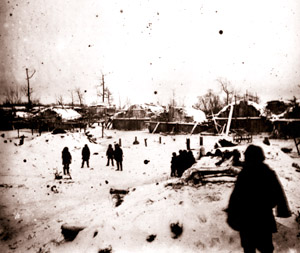
As soon as an Eskimo child started to walk, he or she was given a wide assortment of toys: balls made of caribou skin, small bows and arrows, dolls of skin and fur, and spinning tops of wood. A child learned though play and from listening to and watching adults.
Boys accompanied their fathers on hunting trips from an early age. On these trips, they mastered many of the skills they had been practicing in play with their friends in the village such as spearing fish, harpooning seals, and trapping small land animals. They also learned the habits of the animals and how to find their way around on tundra, sea, and lake, even in blinding snow. When a boy killed an important animal, he was taken to the men's house, or qasgiq, where the kill was announced to everyone assembled. It was cause for proud celebration when a boy killed his first large animal (usually a seal). He was now considered a man, eligible to sleep with the other men in the qasgiq during the festival season and to marry and start his own family.
Girls remained at home and learned all they could from their mothers. When an Eskimo girl was still quite small, she was given a miniature lamp just like the larger one that belonged to her mother. Girls also practiced housekeeping with tiny wooden bowls, grass mats, needles, and small skin work bags. Communities noted certain milestones in a girl's life with celebrations: the first time she picked berries, wove a basket, and danced in the qasgiq.